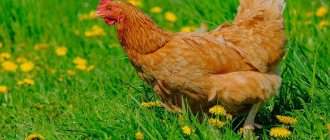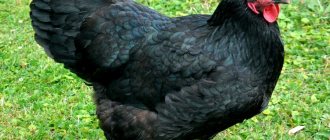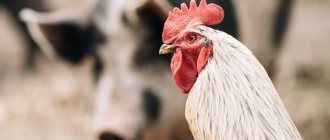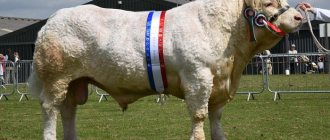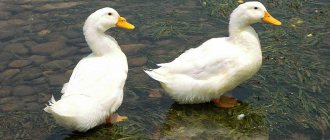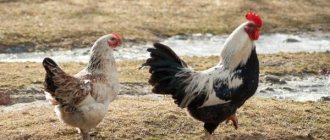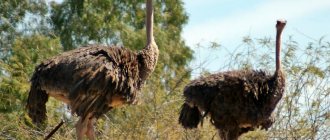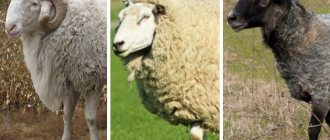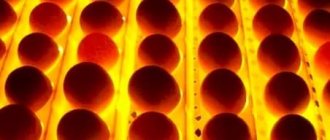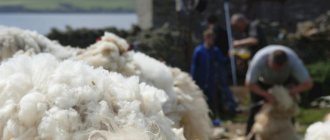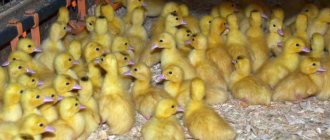Among farmers, meat breeds of ducks are always more popular than species bred for laying eggs. This is due to the fact that, among other things, you can get high-quality feathers and down from them. Meat ducks also lay eggs. Also, when slaughtering meat birds, their liver is stored, which is used to prepare expensive dishes. Selling these products will allow you to make a decent profit, but first decide which breed of ducks you should choose for breeding. We will help you make your choice.
Features of maintenance and cultivation
Large meat ducks reach the desired size only with proper care. The main component is a balanced diet. Keeping birds requires establishing a certain feeding regime. Day-old ducklings are fed boiled eggs with the addition of ground oatmeal. Next, cottage cheese and greens are gradually introduced into the diet. The animal should eat about eight times a day. When an individual begins to actively grow, the number of meals is reduced to three.
Feeding consists of the following components:
- seaweed;
- vegetables;
- greenery;
- fish bone meal.
Even though birds readily eat leftover food, they still require special foods. If you want to breed meat ducks that grow quickly, you must also evaluate the financial side of the issue. In the cold season, they need to be given grain, and not every farmer grows it in their fields. Seasonal purchases are made in advance. There should be enough supplies until warm weather sets in outside. In the spring, the ducks are released to feed freely, but a feeder with grain always remains in the house.
Animals begin to be fattened from the first days. To do this, they are placed in a separate place, away from adults. It will be possible to save offspring if a stable room temperature prevails in the temporary home and the location is not blown by drafts. You can add vitamins and purchased mixtures to the food. How long ducks grow for meat depends on the actions of the owner. Birds also need free space. There are 2–3 individuals per square meter. In this case, they will not feel cramped. If you are fattening animals, this does not mean that they should lead an inactive lifestyle. On the contrary, a good walk promotes appetite.
You need to arrange cozy nests in the barn, because females of fast-growing breeds also lay eggs. Make sure that the pasture does not turn into a swamp during the rainy season. It is better to make the flooring of the poultry house concrete, since other materials tend to absorb liquid. When entering into such a reaction, harmful substances are released, not to mention the smell.
Nutrition
Free-ranging Muscovy duck
Muscovy ducks are not picky eaters - they can eat food waste from the kitchen, tops of root crops, and grass. It is necessary to include grains in the diet, corn and wheat are more preferable. It is better to pre-soak barley or feed it as part of a wet mash.
The Muscovy duck's favorite delicacy is insects and worms, so it is important to walk on the shore of the pond as long as possible, but in the cold season do not allow it to swim; due to the lack of subcutaneous fat, the bird will quickly freeze. Despite being thermophilic, food and water should not be given hot.
You need a lot to drink: one duck consumes up to one liter per day
Despite being thermophilic, food and water should not be given hot. You need a lot to drink: one duck consumes up to one liter per day.
Scheme of feeding ducklings with compound feed
While walking, you need to carefully monitor that there are no shards of glass, metal, or nails - the bird reacts to bright glare and immediately swallows foreign objects.
Compared to the Peking breed, Muscovy ducks consume less food, but they also gain weight more slowly. It is advisable to use supplements containing vitamins B, D, A, and always calcium.
Best breeds
It's up to you to decide which breed of duck is best for meat. In most cases, the choice is based on the financial capabilities of the owner. More than one millennium has passed since man learned to tame animals. Nowadays, there are statistics verified by many years of practice. Experienced poultry farmers have come up with a rating that includes the fastest growing meat ducks.
The duck is almost omnivorous by nature. She can eat as much as a large animal. In addition, if you walk birds in your backyard, you can get rid of weeds without any problems. Females grow up to three kilograms, males - up to five. To preserve the presentable appearance of the meat, slaughter is carried out on the 60th day. If you delay this process, the molting period will begin. Young feathers are difficult to remove when plucked.
Peking birds grow quite quickly: in 2–3 months a young duckling produces a two-kilogram carcass.
Gray Ukrainian
This species is also considered one of the best meat breed ducks, which rapidly gain weight. They can withstand low temperatures without harm to the body. They are unpretentious in their diet and eat whatever they give them. The average weight reaches 2.5–3 kg.
Black white breasted
Already 6 months after birth, birds can give birth to offspring. Their eggs are quite large and oval in shape. Duck meat is very fatty, so it is valued on the world market. As a rule, young animals weighing up to 2.5 kg are selected for slaughter. Their genetic structure allows individuals of different breeds to mate. In this case, the offspring will be stronger and more resistant to diseases. Drakes reach 4 kg of live weight, and the edible part is about 70%.
Moscow Whites
Breeding ducks of this breed is justified by their versatility. They adapt to any living conditions without harming productivity thanks to the crossing of the Peking duck and the Kembel drake. The meat of this bird is juicy and tender. In harsh climates this is the best option.
Swedish blues
One of the largest meat breed ducks, which are widely distributed abroad. They have strong immunity and good muscle mass. The diet of Swedish blue ducks consists mainly of feed and greens. It is vitally important for them to walk more in free space. If you do not provide them with comfortable pasture, this will affect the timing of weight gain and the quality of products.
Bashkir colored
The standard weight ranges from 3 to 4 kg for an adult, and 2 kg for a young one. Despite the positive qualities, such as resistance to disease and withstanding low temperatures, there are significant disadvantages: animals are prone to obesity, and this is unprofitable for the farmer. Meat with a high fat content is not so valued in the market. Trouble can be avoided if you carefully monitor your diet. Another negative quality is a loud cry.
Practice shows that the largest meat ducks grow from this breed. Thanks to the growth on its beak, the bird received its second name - Indo-duck. For an individual to reach its optimal weight, it takes a little more time than in previous cases. This is due to a special metabolism. Despite the long waiting period, the meat of this breed is considered lean.
A feature of the Muscovy duck is its excessive volatility, due to which its wings are clipped.
It is more of a hybrid (born from the union of the Peking and Muscovy ducks) than a separate breed. Thanks to this crossbreeding, Mulards grow quickly with a low percentage of fat.
These birds are considered an exclusive meat breed. They were bred abroad and can only grow in special conditions. Their tender meat is dark in color, incredibly flavorful and juicy.
Favorite blue
With proper nutrition, an adult drake reaches 8 kg. This is one of the heaviest species in our entire ranking. Despite the proportions, the percentage of body fat is less than that of Pekin and Muscovy ducks. Females grow no more than 5 kg and are prized among meat eaters.
Taking care of your health
Before you consider how to succeed in raising ducks, take care to create favorable conditions for their growth. Remember, if even one bird gets sick, the disease will quickly spread to the entire population, which will bring you significant losses. To prevent diseases, you need to follow a number of rules:
- Ducks of different ages should be kept in separate houses.
- If you add onions and garlic to the diet, they will protect birds from ailments such as cholera, typhus and hepatitis.
- Don't skimp on vitamin supplements. Their presence in food ensures not only the health of the chicks, but also contributes to faster weight gain and better quality meat.
- Carefully monitor the cleanliness of the premises and enclosures. Carry out regular cleaning there, do not allow dirt, as it becomes a source of dangerous diseases.
- To disinfect surfaces, use manganese, lime and special disinfectant solutions.
The best breeds and varieties of domestic ducks
Musk (indot)
Many believe that the musk bird received its name due to crossing with a turkey. In fact, the reason for this was the external similarity. The Muscovy duck became domesticated a long time ago, but it appeared in our country in the 80s of the 20th century. Since then, it has been widespread and loved by poultry farmers.
The musk bird has distinctive features:
- wide, elongated body;
- wide chest;
- elongated head;
- large, dark eyes;
- growths on the face.
Pros:
- don't make noise;
- healthy meat;
- get along with other poultry;
- eat greens;
- rush a lot.
Minuses:
- grow slowly;
- They don't go in herds.
Muscovy (Indochka) is widespread and loved by poultry farmers.
Blue minion duck species
Appeared in the late 1990s. Place of origin: Bashkiria. It got its name from the color of its plumage. The breed is large. Some poultry farmers managed to raise a “Blue Favorite” the size of a goose of the same age in six months. Feedback from farmers about the poultry is positive. The main reason for its popularity is its good survival rate.
The Blue Favorite stands out:
- neck of medium length;
- short legs;
- large wings that fit tightly to the body;
- blue color with a smoky tint.
This bird has a lot of advantages:
- unpretentiousness in food;
- growth rate (even with poor food, the duck quickly gains weight);
- survivability;
- ability to be kept in different conditions.
One of the minuses that stands out is that the “Blue Favorite” does not hatch eggs well.
Blue favorite duck has good survival rate
Appeared recently. Refers to the type of meat broilers. Popular in meat exporting countries. Gains weight quickly in any conditions. Thanks to breeders, the bird adapts to climatic and weather conditions. Agidel meat has a distinct taste. Ducks are not afraid of common diseases.
She got a wide, long body with an impressive mass. Plumage color is white. The beak is bright orange. In appearance it is a meat duck. A two-month-old duckling weighs up to 3 kg.
- disease resistance;
- fast growth;
- unpretentiousness in food;
- high productivity.
Agidel received a wide, long body with an impressive mass
Bashkir
One of the best birds in terms of price-quality ratio. By breeding "Bashkirks", the owner gets beautiful, meaty ducks without spending a lot of money on maintenance. The breed received two color options: black and white and khaki.
The Bashkir duck is productive and immune to disease, which simplifies the breeding process. The average weight of an adult duck is 4 kg. With good food and care, this figure increases. Does not require special conditions of detention.
The advantages for breeders include:
- maintenance cost;
- attractive feather color;
- possibility of breeding on farms (for business purposes);
- tender meat.
Popular breed. Often found in households. Many call it the best meat duck. It was developed a long time ago, thanks to which it managed to spread throughout the world.
- dense build;
- wide back and chest;
- prominent forehead;
- massive, short legs;
- powerful wings;
- the plumage is white or cream.
Peking ducks are an amazing breed. Thanks to them, subspecies of these waterfowl have been bred today.
She has many advantages. Here are the main ones:
- good growth;
- unpretentiousness in food and maintenance;
- good layers and hens;
- delicious meat.
The disadvantages include not the greatest weight by today's standards.
Peking duck has delicious meat
Mulards appeared thanks to the crossing of Indian ducks and other domestic breeds. This made it possible to obtain fast-growing and large individuals. Mulards are easy and cheap to breed. Ducks are easy to distinguish from other poultry. They have a large body and a long neck. Plumage – black or white.
The advantages of the breed, in addition to weight, include:
- dietary meat;
- rapid growth (with good food, a duck weighs up to 3 kilograms in two months);
- A spacious area is enough for maintenance.
Minuses:
- cost of ducklings;
- more difficult to raise than other breeds.
Mulards have dietary meat
Cherry Valley
They are in demand among farmers in Russia and the CIS countries. Hardy and strong ducks. They gain weight quickly and are disease resistant. In 50 days, a duckling can gain up to 3 kg. It is distinguished by its egg production - up to 150 per year. The survival rate of ducklings is 95%.
The meat of an adult duck had an excellent taste, although a little tough. It contains many vitamins, especially if the individual is slaughtered at 7 weeks.
Cherry Valley meat is slightly tough
Lean meat, unpretentiousness in feed and care, slaughter at 50 days of life - this has made the French Star 53 breed very popular among farmers. Congenital characteristics and proper care will help you grow a duck weighing up to 4.5 kg.
“Star 53” has a fast metabolism, due to which the absorption of vitamins occurs at lightning speed. Ducks do not accumulate fat, which makes the meat dietary.
Main advantages:
- unpretentiousness to food;
- fast growth;
- immunity to diseases.
Minuses:
- do not like cramped spaces;
- Adjustment of temperature and light conditions is required.
Ducks Star 53 do not like cramped spaces
Blagovarskaya
The breed combines productivity and beauty. Farmers note the profitability of raising these ducks. The breed appeared recently and was bred in Russia. They have a pronounced meat type and excellent taste. The young grow quickly and lose minimal weight during fledging.
Poultry farmers do not have to spend money on feed. The individual is unpretentious in food, productive - offspring emerge from 80% of the eggs.
Pros:
- to maintain a sufficiently equipped barn;
- ducks are calm and balanced;
- active growth.
The Blagovarian duck is not a fussy eater
Indian runner
The breed is 2 thousand years old. Ducks run and swim quickly. The presence of a reservoir is not necessary. When running, they do not spread their wings, which surprises poultry farmers. The breed is calm and only becomes anxious when there is danger.
The weight of an adult is about 2 kg. Productivity – 280 eggs per year. There is little meat, but it is considered a delicacy. The breed is egg.
Pros of "Runners":
- calm character;
- productivity;
- ease of care;
- the ability to live with other birds;
- attractive appearance.
Read also: How to deal with rapeseed leaf beetle: description and harm to the insect
Minuses:
- Light weight.
The Indian runner has a rather interesting appearance
Ukrainian gray
An artificially bred breed. He is distinguished by good health and a love of freedom. Has developed muscles. Spends a lot of time in the water. It stands out for its thick plumage and beautiful coloring. Size – medium. The legs are short but powerful.
You can keep a duck in spartan conditions. She is unpretentious when it comes to food. She is not afraid of many diseases. Weight can reach 3.5 kg.
The disadvantages include a love of water. Birds must be allowed to roam freely at all times.
Ukrainian gray can live in spartan conditions
Russian Crested
The breed is of interest to many breeders and farmers. The main feature is the crest on the head. The duck has an interesting appearance and a calm character. The bird does not grow large - maximum weight is 2.5 kg. Very mobile, thanks to developed muscles.
Unpretentious in food. He treats bodies of water calmly. You shouldn’t feed them too much – you’ll end up with a carcass swollen with fat.
Pros:
- unpretentiousness in food and maintenance;
- productivity;
- fast growth.
Minuses:
- little weight.
The Russian Crested is not fussy both in food and in maintenance.
A bright and very beautiful breed of ducks. The color of the ducks is green with a metallic tint. The breed belongs to the meat-egg species, but it is used more often for decorative purposes. The meat doesn't look very appetizing because of the black stumps.
Another distinctive feature is that Cayugas lay black eggs. About 150 pieces can be demolished in a year. Ducks willingly hatch them.
In general, ducks are not picky, which allows them to be kept in any conditions.
Advantages of the breed:
- beauty;
- high productivity;
- beautiful hens;
- unpretentiousness.
Minuses:
- light weight;
- susceptible to disease.
Cayuga is a bright and beautiful breed of ducks
A popular breed that does not require serious care. Even a novice farmer can cope with ducklings. They do not need a pond or special food. The chicks grow quickly, are immune to diseases, and are mobile. Ducks tolerate low temperatures very well.
Individuals quickly gain weight - up to 3.5 kg in 7 weeks. The meat is dietary and odorless. A duck can lay up to one hundred eggs in a year.
Moscow Whites
A meat-oriented breed. Very prolific ducks with high quality meat. They have an attractive appearance. Capable of gaining weight up to 4.5 kg. Excellent egg production - up to 150 eggs per year.
The breed is unpretentious in food and can do without a pond. Resistant to diseases. His character is calm. You can buy ducks for a low price. With the right food, Moscow Whites grow up to 2 kg. in 2 months.
Pros:
Flaws:
- Weight Limit.
Moscow white ducks can do without a pond
Black white breasted
It appeared in the middle of the last century, but could not gain popularity among farmers, although it has good characteristics. "Black White-breasted" grows very quickly and does not require special feed. The weight of an adult can reach 4 kg. The meat is tender and pleasant to the taste.
The egg production of poultry is 130 eggs per cycle, but this applies to broilers. Very high survival rate of offspring. They can easily withstand the cold. The main thing for them is dry bedding.
You can feed almost everything. It is necessary to calculate the amount of food in order to get a large, healthy individual.
The black white-breasted duck is especially good at surviving offspring
Khaki Campbell
An egg-meat breed. Very common in Russia. They are grown both on farms and in private farmsteads. Ducks are very active and mobile. They are small in size. The color of the plumage is “sand”.
Pros:
- weight up to 3.5 kilograms;
- egg production up to 200 eggs per year;
- delicious meat.
Minuses:
- do not hatch eggs;
- requires a lot of space and pond.
Khaki Campbell ducks do not hatch eggs
When choosing a duck breed, the main thing is to know what you want to get from it in the end - meat or eggs. Many waterfowl are similar to each other, and only an experienced farmer will notice the differences. The productivity of any ducks depends only on the efforts of the owner.
Description
A feature of the Agidel breed is its strong immunity to diseases that affect domestic ducks. Individuals obtained as a result of improved characteristics are able to adapt to various environmental conditions and do not require specific care. Duck meat has excellent taste. Representatives of the breed demonstrate high egg production rates. And the white feathers of such ducks are very valuable and are actively used by large light industry enterprises.
Find out what the life expectancy of a duck is and how a female duck differs from a male one.
Appearance
The external characteristics of the Agidel duck differ from representatives of other breeds, especially in the white color of the feathers and relatively large size. Adults of this breed are very beautiful. They have a friendly and calm temperament. The main characteristics of the appearance of birds of this breed are presented in the table:
| Head | Large, long |
| Beak | Wide, orange |
| Eyes | Dark, located high |
| Neck | Long, medium thickness |
| Breast | Deep, protruding |
| Back | Wide and long |
| Torso | Horizontal, muscular |
| Plumage color | White |
| Legs | Short, light orange |
| Wings | Average |
| Weight | The drake has 3.8 kg, the duck has 3.5 kg |
Productive characteristics
Agidel ducks demonstrate high productivity rates. They are a good source of tasty and delicious meat, and can rapidly gain weight when keeping requirements are met. At the age of 6 weeks, the weight of an individual of this breed reaches 3 kg. If you breed these birds for meat, it is recommended to send them for slaughter after 50-65 days. After this period, their feathers become coarser, which is why plucking the bird becomes a difficult task.
Ducks are capable of laying many eggs. One female of this breed can produce up to 260 eggs during the productive period. The eggs are large and regular in shape. The weight of one duck egg ranges from 80-110 g.
Now about the plumage. In terms of its properties and quality, the down of these birds is practically no different from that of a swan. Therefore, at light industry enterprises, clothing is made from this natural raw material, which is especially popular for northern regions with a cold and humid climate.
How to distinguish a drake from a duck
Visible differences between females and drakes in representatives of the Agidel breed become noticeable only a few weeks after birth, when the ducklings grow up and become adult birds.
Did you know? One of the most unusual ways to determine the sex of a duck is to turn the bird upside down. It is believed that in such a situation the drake will actively break free from the hands, and the female will calmly hang upside down and not move.
You can distinguish a male of this breed from a female by the following criteria:
- Appearance. Agidel drakes are always larger than females. Their neck is longer and decorated with a small crest. The shape of the drake's forehead resembles a triangle, and the duck's forehead resembles a trapezoid. Males have curled tail feathers, while ducks have straight feathers. The most popular way to determine the sex of a duckling is to examine the anus. If you place the bird upside down and massage its abdominal area near the cloaca, you will notice a small spiral-shaped penis on the male. If you repeat the same procedure for a female, only spherical growths will be noticeable.
- Voice differences. Agidel drakes are capable of hissing or whistling. Females of this breed, in addition to these sounds, make cackling and characteristic sounds similar to trills.
- Behavior. Determining the sex of ducks based on this characteristic is very inaccurate. Some females may behave like males, especially if the ratio of drakes to ducks in the house is disturbed. It is believed that drakes can start fights near feeders with other males.
Pros and cons of the breed
- Here is a list of their positive qualities:
- rapid weight gain;
- immunity to diseases;
- high value of fluff;
- good egg production;
- ability to adapt to environmental conditions;
- simple maintenance and feeding;
- delicious meat.
- There are few disadvantages, but they still exist:
- increased fat content of meat (especially if there is insufficient amount of grass in the diet);
- possibility of hatching ducklings only from the incubator.
Representatives of this breed have many more advantages, which is why Agidel ducks have become popular for breeding on large and small poultry farms.
Important! Eating raw duck eggs is prohibited. But baked goods prepared using them turn out especially airy and tasty.
The largest breeds of ducks
As with the breeding of other types of poultry, when raising ducks, two factors are distinguished - precocity and egg production. Most farmers around the world, due to the popularity of chicken eggs in cooking, give preference to breeding meat breeds of ducks, paying attention to the time it takes to gain muscle mass and the taste of the meat.
The painstaking work of breeders has led to the emergence of unique breeds of ducks. In this regard, let’s look at the large representatives of this poultry and find out what the largest breed of ducks in the world is.
The breed of these unique ducks was bred by Beijing breeders more than 3 centuries ago. Due to its rapid growth and tasty meat, the variety quickly spread throughout the world, and today it has become commonplace both in private backyards and on large poultry farms.
Adults can reach a weight of up to 3.5 kg, and some drakes exceed 4 kg. The Peking duck has a massive body with a wide chest and back, but the gracefully curved neck is short.
The bird is not fussy to keep and easily adapts to any climate.
Nutrition
In order for a duck to have a healthy weight and produce a large number of eggs, you need to know exactly what you can feed domestic ducks. The bird does not require exquisite dishes, since it is accustomed to eating modestly. To feed them, you can pour grain, mixed feed or mixed products.
It is important to pay attention to the inclusion of grass in the diet of ducks, since it is simply necessary for the birds (should make up twenty percent of the total diet). Also ensure access to clean drinking water
Here is a more detailed feeding algorithm:
- 50% of a duck's diet can be corn, oats or wheat.
- 10% can go to ground legume products such as peas.
- The duck can be given bran (no more than 20%), beer cake or yeast (no more than 3%).
- During the summer, ducks must eat plants such as duckweed. One individual can eat 0.5 kg of plants.
- 20% can be ground beets, and 10% can be salted carrots.
Thanks to compliance with dietary standards, ducks will feel good and behave actively.
Gray Ukrainian
Poultry bred by Ukrainian breeders has a massive and strong body, also with developed muscles. The small head has a powerful beak,
Gray Ukrainian has an unusual and original color. The average weight of adult females is 3 kg, but drakes are much larger and grow up to 3.5 kg. They also grow quickly. By the age of two months, ducklings gain 2-2.4 kg.
Low price and unpretentiousness in maintenance and feeding make this breed one of the most popular among European farmers.
Mulards
They are popular among farmers and poultry farmers. The fattening period is only 4 months, but the bird reaches a weight of 4-6 kilograms. Mulard duck is suitable for those who do not like fatty duck meat, since the ratio of fat to meat is 90:10. They are unpretentious in food, they lift their weight well on greenery.
It is because of their herbivory that they grow slower than other broiler birds, although they consume no less feed. Individuals of this breed do not breed with each other and do not lay eggs, which can be considered a disadvantage. But what can please us is that the bird does not scream like a Peking duck, but on the contrary, it is calm and balanced, which creates fewer problems for its owners.
Black white breasted
One of the most beautiful breeds in the world differs from its relatives by the characteristic black color of its feathers with a white chest. The legs of the beautiful bird are also black. The beak also has a dark color.
They were bred by crossing the Ukrainian White-breasted with representatives of the Chinese breeds. Representatives of this meat variety of poultry at the age of 6 months reach a weight of 3.5-4 kg.
Experts note the excellent taste of meat, high calorie content and low fat content. But egg production is 140 eggs per year. But this breed of duck can lay eggs for quite a long time.
Read also: How to treat an area for ticks with your own hands: how to get rid of ticks in a summer cottage
Musk (indot)
The Muscovy duck comes from South America, where the ancient Indians raised this bird for hundreds of years. In the countries of the former Soviet Union, the Indian duck appeared in the 80s of the last century. The breed allegedly received its name due to the specific aroma of the meat, but contemporaries do not feel anything like that.
Description. The bird's appearance is remarkable. There are bright growths on the top of the head, and it has a narrow beak that curls downward. On the top of the head there are elongated raised feathers; when the bird is frightened or surprised, they puff up even more. Muscovy ducks have blue, gray or brown eyes. The neck is strong and short. The chest is well developed. The back is long and wide. The body is placed almost horizontally. Short legs give it a stocky appearance. Birds come in brown, white, and blue colors. There are specimens with brown and white, black and white with a pattern.
Productivity. Adult males weigh 5-6 kg, ducks - 2-3 kg. At 2 months, the weight of the young reaches 3.8 kg for drakes and 2.2 for females. During the year, laying hens produce 90-100 eggs weighing up to 75 g. Egg products are valuable and healthy.
Content. Birds prefer dry and clean rooms. The poultry house should be spacious and light. Animals are picky about cleanliness for the reason that it affects the laying period. The room temperature is maintained at 18-20 degrees Celsius.
Advantages. Unpretentiousness in nutrition, developed maternal instinct, endurance, ability to live for a long time outside the reservoir.
Flaws. Long-term development and birds’ dislike of cramped conditions and “damp” conditions contribute to the development of diseases.
You can find out exactly what the Muscovy duck breed looks like and how to keep them in the video below:
Moscow Whites
The Russian variety has a rather large, slightly oblong head and a massive body. The back and chest are wide, and the rather large body is set horizontally relative to the ground.
Adults weigh on average 3.8-4 kg, but egg production is 150 eggs per year. But they are bred primarily for meat.
Among the advantages, it is necessary to note rapid growth, as well as tasty and soft meat. These qualities make Moscow white ducks quite popular not only in Russia, but also in the world.
Star 53
Star-53 is a cross from the Peking duck. The cross was created by a French breeder at the Grimaud freres selection company.
Description. Externally, the bird is similar to its ancestor. She has snow-white plumage. Large dimensions. Bright yellow beak and feet. Massive back, elongated body, powerful and wide chest, protruding forward. The round head rests on a thick, muscular neck. The tail is strong, the wings are long.
Productivity. By the age of two months, the bird weighs about 4 kg. The percentage of meat in the carcass is more than 60%. Over the course of a year, a laying hen produces up to 300 large eggs weighing about 90 g or more.
Content. Birds should not be kept in close quarters. If the birds do not have space, they will behave restlessly, fussily and noisily. In the poultry house, it is important to adhere to the optimal temperature regime - it should not be hot and not cold.
Advantages. Already at 2 months they receive large meat carcasses with minimal fat content. Birds are also valued not only for their appearance, but also for their high egg production and ease of care and maintenance.
Flaws. It is impossible to keep them indoors all the time; it is problematic to purchase really high-quality young animals, the high cost of hatching eggs, and the high cost of feed.
Swedish blues
Representatives of the Scandinavian variety of domestic birds have high productivity rates. The most popular ducks among German breeders.
Swedish ducks are distinguished by their flexible character, trustfulness and quickly get used to people. In addition, they have an original silver-gray color, and the body is small, but compact and powerful.
They weigh from 3.5 to 3.9 kg. Note that due to their unpretentiousness in maintenance, they can be bred even in northern latitudes, and in terms of early maturity they are leaders among their relatives.
The original hybrid with a romantic name was bred by breeders in Kazakhstan. Peking ducks became the basis, and the result was highly productive individuals with high egg production.
The color turned out to be the same as that of the daughter individual - white with an orange beak and reddish paws. The weight of a drake reaches 5 kg, and of females up to 3.5, which brings the variety to a leading position.
It is noteworthy that Medeo does not require grazing; they can be kept in small areas and even in cages, and the largest number of them are kept in small farms.
How to choose the right one, which one is better, criteria
Many duck varieties tend to quack a lot and loudly. This must be taken into account when choosing, since the noise will eventually begin to bother the owner and neighbors. Before purchasing chickens, they are examined and checked to ensure that there are no external signs of disease. The best individuals should be large, with a well-developed body and powerful paws.
The climatic conditions of the region should be taken into account. Some species are not afraid of frost; they can be allowed for long walks. Other breeds, on the contrary, need additional heating and long daylight hours, a lot of fresh grass.
Bashkir colored
On one of the Russian breeding farms, a unique meat breed was bred, which has several plumage colors. You can see dark green birds, and sometimes the unusual and beautiful white-breasted ones.
Like all meat breeds, “Bashkirs” have a massive, strong build with short legs and a curved neck. The weight of adult birds can reach 4 kg. And what’s remarkable is that they reach high weight levels in 2-2.5 months.
Experts and restaurateurs highlight the good taste of low-fat meat.
Pace
Breeders who have been working with the X-11 duck breed for a long time were able to achieve good results and develop a new species. Tempo, compared to other breeds, is characterized by good productive characteristics and early maturity.
Description. The birds have a large, oval body with a small tail and yellow, large paws. The bird has a small head with a large, yellow beak and two black eyes. The head is supported on a pronounced, long neck with a slight bend. Wings with dense snow-white plumage.
Productivity. Birds at two months of age already weigh about 3 kg. Typically drakes are larger than ducks. Laying hens produce 150-160 large eggs per year.
Content. The bird can do without a pond, but water containers are installed in the walking area. It is also necessary to equip the place with a canopy to protect the birds from rain or sun.
Advantages. Birds are easy to care for and can get used to low temperatures.
Flaws. Good weight gain requires proper nutrition, which can be expensive.
Indian runners
In our review, let's look at the large, but egg-bearing Indian runner. Among its relatives, this bird is distinguished by its original body position; these birds raise their body high and straight out their long neck.
In addition, this is one of the most ancient breeds on the planet. Egg production is up to 250 eggs per year, but the weight of adults reaches 3-3.5 kg.
In Russia, these birds have been known under the name “penguin” since the mid-19th century, and today they can often be found on the farmsteads of Russian farmers.
Due to the specific smell of feathers and skin, these birds received this name. This unusual breed was bred in South America, but due to its high adaptability to various conditions, it quickly spread to the USA, Canada, European and Asian countries.
It is interesting that, despite domestication, these ducks are still considered wild. It would seem to be a waterfowl, but Muskies do not like to swim, but fly up and sit on the branches of low trees.
Farmers who breed these birds highlight their high productivity, tasty meat and easy feeding. In addition, this is a fairly large breed. Drakes grow up to 4.5 kg.
The simply enormous productivity of this variety led to the breeding of Mulards on an industrial scale. But you can often find these birds on personal farmsteads.
In two months, Mulards gain weight up to 3-3.5 kg. This interspecific hybrid cannot live in the wild, as it is adapted only for artificial feeding.
The popularity of the breed is evidenced by the fact that in France there are approximately 35 million females, whose meat is used to prepare foie gras. The bird is also common in the USA, England and some countries of Southeast Asia.
From the name you can understand that this large individual was bred in France. The peasants of Normandy once domesticated wild ducks, and painstaking breeding work led to the appearance of crosses that reached a weight of 3.8 kg in a few months.
This is a fairly rare breed. Due to the low productivity and unpresentable appearance of the meat, it is kept mainly for decorative purposes and for participation in various exhibitions.
The unpopularity of French ducks among home farms is also due to the difficulty of caring for young animals. But still, the meat is tasty and juicy and is considered a delicacy and is quite expensive.
Khaki Campbell
When breeding this breed, breeders set themselves the goal of obtaining a bird that would not only lay eggs well, but also have a meat orientation. An English breeder managed to make this a reality, after whom the duck was named.
Khaki Campbell
Khaki Campbell can be recognized by the following features:
- Feathers can have different colors - from light brown to light white.
- The weight of the male is 3.6 kg, the female is 2.5 kg.
- The breed is classified as early maturing, since after six months the female is ready for mating.
- A duck can produce 200-250 eggs per year. The mass of one will be 80 g.
- The birds' heads are small, as is their beak and neck.
The advantages of the Khaki breed include:
- High egg production.
- Duck meat is tender and tasty.
- Birds quickly acclimatize to new conditions.
On video - breeding Khaki Campbell duck:
The Khaki Campbell breed has one drawback - females are not able to hatch eggs for a long time, so if a person does not intervene, then part of the litter may die.
Blue favorite
The state breeding program at the Blagovarsky plant has led to the emergence of an amazing breed that is unpretentious in maintenance. Favorite is characterized by a unique gray color with an unusual blue tint.
Specialist breeders and breeders note high survival rates in both adults and ducklings.
The favorites gain 3-4 kg in two months of feeding, and some drakes weigh 5 or more kilograms. Perhaps this is the largest duck in the world among meat breeds.
From an ugly duckling to an important bird
Poultry farms and farmers themselves breed domestic ducks. The duck is a good hen, so to hatch ducklings it is necessary to build a warm nest equipped with light.
A threshold must be made to the nest for unhindered access to food and water. Provide the duck with peace and quiet.
For better safety and minimal losses of ducklings, an incubator is used. For two weeks, the brood is kept in small boxes or boxes with high walls.
Be sure to build a bedding at the bottom of the container, and make holes in the walls for air ventilation.
Grown-up chicks are transferred to a barn or pen with high walls.
To protect young animals from rodents and other pests, the floor in the room should be raised to a height of 30 cm. There should be drinking bowls and feeders in the room.
Egg direction
Egg breeds of ducks are varieties with high egg production.
Indian runner
This variety rightfully takes first place among egg breeds. A distinctive feature is an upright narrow body, a rounded chest, a small head on a long neck.
A female can produce up to 350 eggs in a year, which is a record compared to other species. The eggs are large (up to 80 g) and very nutritious.
Despite such indicators, Indian runners are unpretentious in keeping , although they are not adapted to cold climates.
Khaki Campbell
Khaki Campbell is in second place in terms of productivity . The color of birds is found in three variations - dark, light brown, fawn. The build is medium, well-built, the neck is small, the head is large.
Khaki Campbells lay up to 340 eggs per year. Unlike runners, this bird can easily tolerate temperatures below 0 degrees, but sudden changes are still unacceptable. A bright, well-ventilated enclosure next to a pond is suitable for keeping. These birds are unpretentious in food.
Bashkir
Another variety that is worth choosing for eggs. The bird's build is strong with a protruding chest. The neck is short with a flattened head. Widely set short legs.
The female brings 270-290 eggs per year. The egg weighs 70-75 g.
This breed requires a spacious and clean house with constant access to water (pond). Among the disadvantages of this breed, it is worth noting the fact that they cannot be overfed, since Bashkir ducks are prone to obesity, which negatively affects their productivity.
Meat direction
Representatives belonging to this group give the best indicators in growth rate and body weight gain.
Blue favorite
It is distinguished by its dense, compact body and early ripening . It has powerful paws, a large head, and a short neck. The body is elongated with small, tightly fitting wings.
With proper fattening, drakes of this variety gain weight up to 3 kilograms after two months. Subsequently, growth slows down, and at 5-6 months the drake reaches 5 kg, and the female - 4 kg. Blue favorite meat is dietary.
Another name for the variety is Pharaoh. A distinctive feature is its noble color: the feather is soft blue, smoothly turning into rich blue, sometimes with ashy splashes.
Does not require special conditions for breeding. A warm and dry room is enough; there is no need to build pens. Representatives of this breed can withstand both heat and cold winters, boast strong immunity and high adaptability to living conditions.
Swedish blues
Medium-heavy variety. The male reaches a weight of 4 kg, and the female - 3 kg. The body is muscular, toned, dense with a wide and straight back. Oval head with a flat, flattened beak. The tail is short and erect. Despite the name, the color of the plumage varies from gray-black to light gray.
This type of poultry has one drawback - slow weight gain.
Ducks are unpretentious in food, but require intensive feeding. For good growth, spacious, light pens are necessary - this has a beneficial effect on weight gain and meat quality. Meat is considered fatty.
Moscow Whites
They belong to heavy breeds. The body is large and fleshy. Straight back, turning into a short tail. The chest is convex, large with a massive beak. Color white.
The weight of an adult drake reaches 5 kg, the female is 1-2 kg lighter.
Ducks quickly gain weight (at the age of 2-3 months the duckling reaches a weight of 3 kg and is ready for slaughter), are unpretentious in keeping and are adapted to extreme temperature changes. The meat is tasty and belongs to dietary varieties.
Gray Ukrainian
The Ukrainian gray duck breed is classified as a heavy-weight variety.
Gray Ukrainian ducks
The body of ducks is strong, knitted, resting on massive, widely spaced legs. The neck is short, the head is small, slightly elongated. In their color, they resemble the wild breed gray mallards - the feathers are gray, sometimes clay-colored.
With sufficient feeding, already at two months the bird is ready for slaughter, as it gains a weight of 2-3 kg. The duck meat is tender and medium fat.
The bird is unpretentious in keeping. She needs a lot of free space. To improve growth in the summer, it is advisable to add more greens to the diet, and feed with vitamins in the winter.
Rouen
Domestic Rouen ducks are smaller in size than the breeds described above. They have a wide body with a deep-set sternum and strong short legs. The oval back tapers towards the tail, the small head is set on a strongly curved neck.
The color of the feather as a whole is close to a red-brown hue. The wing is lighter, sometimes with a white border along the edge.
An adult male weighs 4 kg, a female – 3-3.5 kg. The meat of these ducks is dark in color, juicy, soft, and lean.
Keeping the breed is troublesome. Birds are prone to obesity, so special attention is paid to feeding. It is better to use balanced food and clearly establish a feeding schedule. Long walks are undesirable for them, and the presence of a body of water near the breeding site is mandatory.
Musk
Another name for the breed is Indian ducks. Popular among farmers due to their high productivity. A drake can gain weight of more than 6 kilograms, and a female – 4-5 kg.
There are several varieties within the breed, differing in color - from light to blue-black.
In addition, Indian ducks are unpretentious - they don’t even need a pond. They adapt to any conditions and have strong immunity. Not picky about food.
Muscovy duck meat is soft, tasty and lean.
Black white breasted
Externally, ducks stand out due to their white breast and the dark color of the rest of the body - hence the name. The body is long, massive, with a wide back. Large chest, small head with a short beak on a long neck. Wide wings that fit tightly to the body.
When breeding this variety, the goal was to obtain good weight indicators. As a result, the breeders received a variety that gained weight well. Already at 2-3 months the bird gains up to 3 kg and is ready for slaughter, and by six months the weight reaches 4-5 kg.
Black white-breasted birds need an equipped poultry house, and there must be open water. You should pay attention to keeping them in the cold season: these birds cannot tolerate frost.
You can feed them with standard food, but in winter it is worth feeding them with vitamins and minerals.
Mulards
An artificially bred variety.
Mulards
Individuals are white in color and have a black spot on their head. Knocked down dense body of elongated shape. On the elongated neck there is a medium-sized head with an elongated gray beak, a small tail and low paws.
Some representatives reach a mass of 7 kg. The bird is ready for slaughter after 3 months.
Ducks are unpretentious in keeping. The disadvantage of mulards is that they are a hybrid of two varieties that do not produce offspring. Usually, to obtain a hybrid, musk drakes are crossed with breeds such as Pekingese or Orpingtons, and less often with others.
